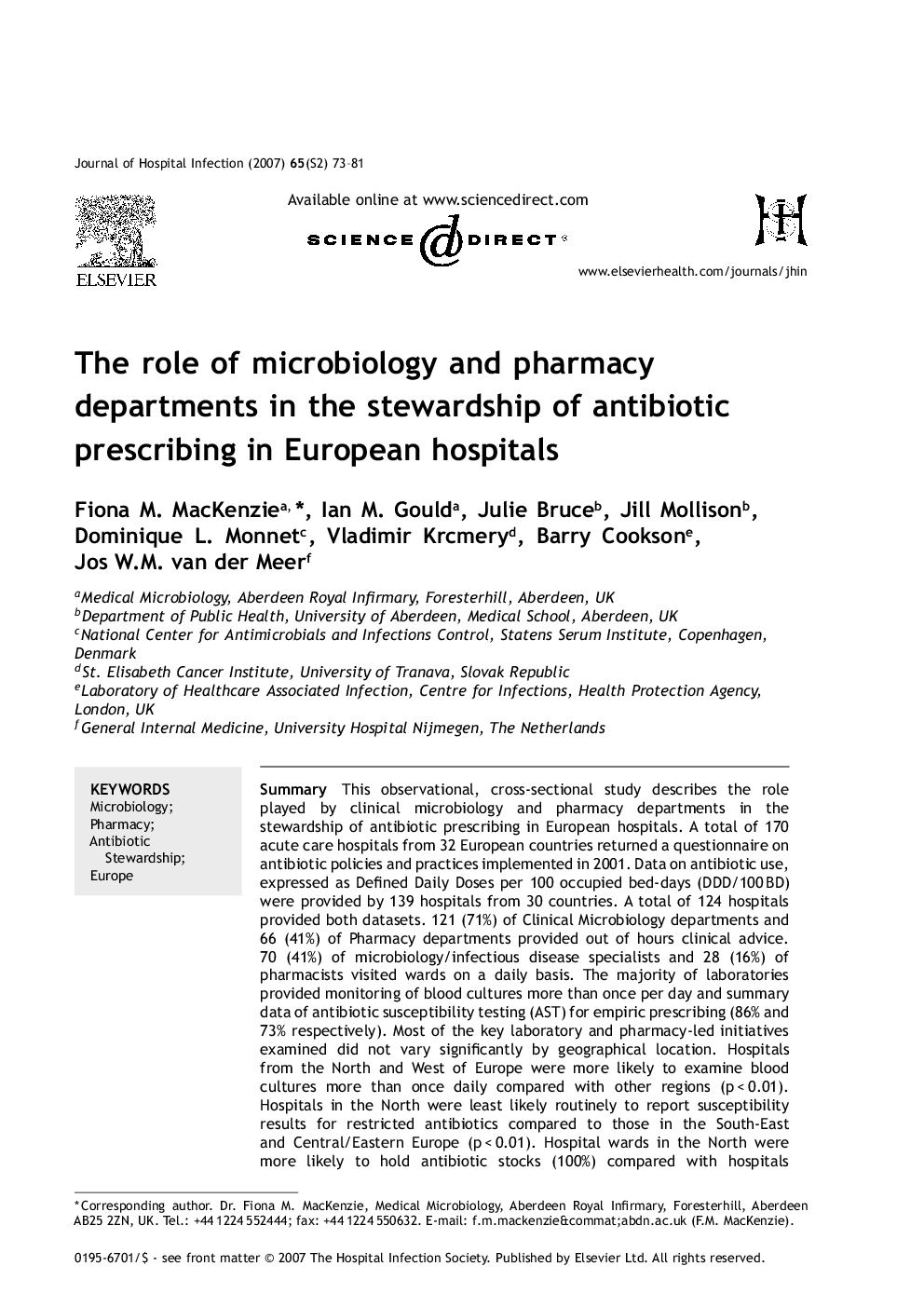| کد مقاله | کد نشریه | سال انتشار | مقاله انگلیسی | نسخه تمام متن |
|---|---|---|---|---|
| 3373934 | 1219312 | 2007 | 9 صفحه PDF | دانلود رایگان |

SummaryThis observational, cross-sectional study describes the role played by clinical microbiology and pharmacy departments in the stewardship of antibiotic prescribing in European hospitals. A total of 170 acute care hospitals from 32 European countries returned a questionnaire on antibiotic policies and practices implemented in 2001. Data on antibiotic use, expressed as Defined Daily Doses per 100 occupied bed-days (DDD/100 BD) were provided by 139 hospitals from 30 countries. A total of 124 hospitals provided both datasets. 121 (71%) of Clinical Microbiology departments and 66 (41%) of Pharmacy departments provided out of hours clinical advice. 70 (41%) of microbiology/infectious disease specialists and 28 (16%) of pharmacists visited wards on a daily basis. The majority of laboratories provided monitoring of blood cultures more than once per day and summary data of antibiotic susceptibility testing (AST) for empiric prescribing (86% and 73% respectively). Most of the key laboratory and pharmacy-led initiatives examined did not vary significantly by geographical location. Hospitals from the North and West of Europe were more likely to examine blood cultures more than once daily compared with other regions (p < 0.01). Hospitals in the North were least likely routinely to report susceptibility results for restricted antibiotics compared to those in the South-East and Central/Eastern Europe (p < 0.01). Hospital wards in the North were more likely to hold antibiotic stocks (100%) compared with hospitals in the South-East which were least likely (39%) (p < 0.001). Conversely, hospital pharmacies in the North were least likely to dispense antibiotics on an individual patient basis (16%) compared with hospital pharmacies from Southern Europe (60%) (p = 0.01). Hospitals that routinely reported susceptibility results for restricted antibiotics had significantly lower median total antibiotic use in 2001 (p < 0.01). Hospitals that provided prescribing advice outside normal working hours had significantly higher antibiotic use compared with institutions that did not provide this service (p = 0.01). A wide range of antibiotic stewardship measures was practised in the participating hospitals in 2001, although there remains great scope for expansion of those overseen by pharmacy departments. Most hospitals had active antibiotic stewardship programmes led by specialists in infection, although there is no evidence that these were associated with reduced antibiotic consumption. There was also no evidence that pharmacy services reduced the amount of antibiotics prescribed.
Journal: Journal of Hospital Infection - Volume 65, Supplement 2, June 2007, Pages 73-81